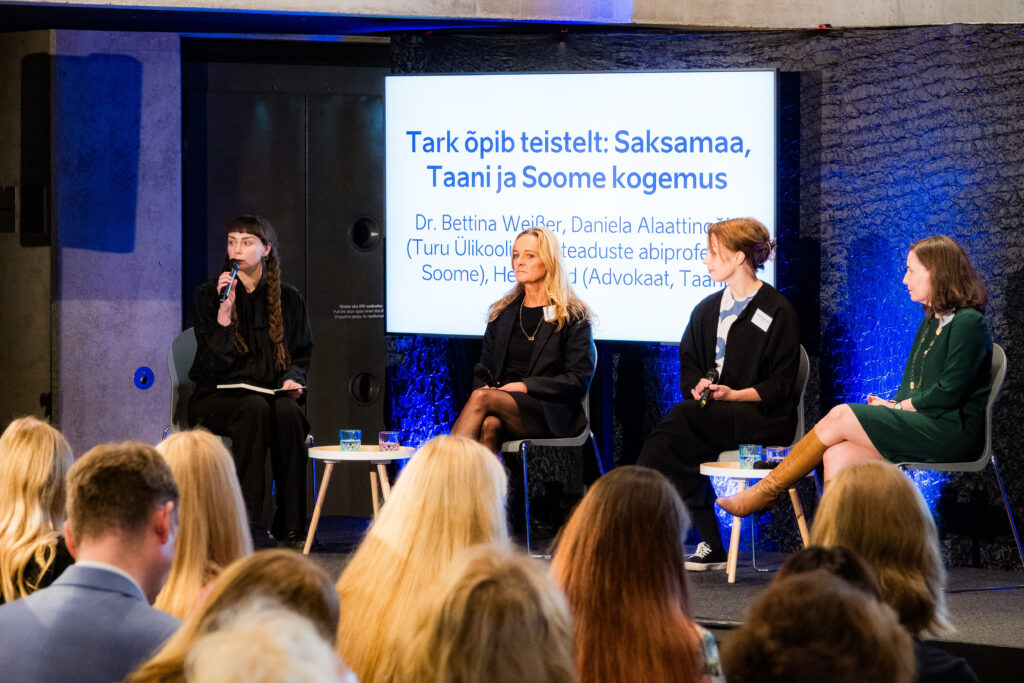Daniela Alaattinoğlu: yes-means-yes model is more comprehensive
In Finland, the consent law came into effect in 2023. According to legal researcher Daniela Alaattinoğlu, one significant change was in the approach to evidence. Previously, the emphasis might have been on determining the type of violence involved, whereas after the change, the focus has shifted more toward what kind of communication took place.
Daniela Alaattinoğlu is an assistant professor of law at the University of Turku. As a researcher, Alaattinoğlu has observed the process of adoption of consent laws in the Nordic countries more broadly and researched the topic of consent and the changes in the Criminal Code. She has also organised seminars and discussions on this topic in Finland.
Criticism from both international institutions and Finnish people
Finland started the official process to adopt the consent law in 2019 when the revision of the definition on rape in the Criminal Code was included in the Government Programme. The law was adopted in 2022 and it entered into force in 2023. “The government was planning on doing a bigger revision of the chapter in the Criminal Code in Finland that regulates sexual offences because the definitions were considered to not correspond well with societal changes, but also international legal changes,” Alaattinoğlu describes.
She adds that different international legal developments were among the reasons for this change, one of them being the ratification of the Istanbul Convention. She points out that Finland was getting international criticism from the Group of Experts on Action against Violence against Women and Domestic Violence, GREVIO (the body of independent experts which monitors the implementation of the Istanbul Convention) and had also gotten previous criticism from other significant international actors, such as the Committee on the Elimination of Discrimination against Women, the CEDAW committee. “There was this international criticism and also the realisation that the Finnish definition of rape was not up to international standards, so it needed to be changed.”
In addition to this, Alaattinoğlu says that the #metoo movement had shaped society’s understanding of sexual violence so that the pressure to change the law also came from regular citizens. “There was a very high profile citizens’ initiative called Suostumus2018,” she recalls. “That got a lot of signatories very fast, so there was this kind of consensus building in society.” She also stresses the importance of Amnesty International, which was very active in promoting a new law and the support of prominent legal figures and legal experts in Finland, who were also in favour of the law. Furthermore, she is certain that the fact that many countries had adopted some forms of consent-based rape definitions was really important, because it showed that such legal regulations were viable.
Societal understanding had already come to the law
The discussion about sexual violence is not new in Finnish culture – according to Alaattinoğlu, it has been discussed for decades, especially among feminist movements and scholars, and the societal opinion really had changed before the law took effect. “What constitutes sexual behaviour which is not accepted has changed and that change didn’t happen in 2022 in Finland, it probably happened before. I think that there was a general feeling that most people thought that engaging in sexual activities with a person who doesn’t consent and doesn’t want to engage in sexual activities is not acceptable behaviour and should even be criminalised.”
Alaattinoğlu points out that the Finnish definition of rape was relying on quite old conceptions of what is an accepted sexual behaviour and it was partly reflected in the language used about rape. The old Finnish word used in historical versions of the Criminal Code was väkisinmakaaminen, which directly translates to “use force to sleep with somebody”. Even though the terminology had changed and the definition of rape had been amended, the historical concept was still prevalent in criminal legal procedure: reproducing the idea that a rape has to be physically violent and victims should ideally use force to fight a rapist off.
Daniela Alaattinoğlu and her colleagues Johanna Niemi and Heini Kainulainen researched the implementation of the old law in 2018 and found out that the courts were already to some extent using the concept of consent when they were evaluating evidence and considering whether the actions which had taken place constitute an offence or not. “It was quite interesting to see that this concept and this understanding in society had already entered the law, but the change of the legislation was quite late in this way.”
Elements of the crime change all the time
Alaattinoğlu touches on the subject of presumption of innocence because it has been a recurring question asked in discussions about the consent law in Estonia. She says that both the presumption of innocence and also the principle of legality were discussed a lot in the Finnish context during the early 2010s. “Both are, of course, very important concepts and should be protected. I think it’s important to have an evidence-based discussion and look at other countries’ models and actually investigate specific drafts and wordings. What are the arguments behind that the presumption of innocence would be weakened? Are some wordings more in line with foundational legal principles such as the presumption of innocence and the rule of law than others, and why?” She says that it’s important to address those concerns, but, drawing on the Finnish example, once there was an actual draft, there was much less discussion about this because it was also clear that what changes are the elements of the crime, not foundational procedural safeguards such as the presumption of innocence.
“It’s normal that the definitions of crimes change. That means there are maybe some different focuses in the criminal process, but the standards and burden of proof, the rule that one is innocent until proven guilty and beyond reasonable doubt, have not changed.”
Alaattinoğlu points out that one thing changing is the theme of evidence. “Whereas the themes previously might have been around what kind of violence there was, then after the law changed, it might be more around what kind of communication took place. How did the defendant make sure that the plaintiff wanted to engage in sexual activities? Such changes can be seen, of course, but this does not affect the presumption of innocence. The presumption of innocence is important and this change of the law has not affected that.”
More situations are included
The new law didn’t just improve the situation for existing victims of a rape, but it also included a more comprehensive definition, meaning that more victims of sexual violence can be recognised as rape victims in the eyes of the law. “The idea behind the yes-means-yes model was that some situations which were not previously considered rape would be considered as such. This could be, for example, situations where the victim doesn’t really have the chance to even say no, such as when the perpetrator suddenly penetrates the victim while the victim is asleep. Based on our research, I would also say that these kinds of situations are more common than one might think.”
“The presumption of innocence is important and this change of the law has not affected that.”
Alaattinoğlu says that although the previous Finnish law defined some situations of sexual intercourse conducted by exploiting a defenceless person as rape, her and her colleagues’ investigation of how this section was implemented in practise showed that the standards of evidence were very high. As a result, it was very difficult to actually make cases fall under that provision. “In that sense, I would say that the current law better covers situations in which victims are, for different reasons, unable to defend themselves or express their opinion,” she adds.
A law should be very clear
As Estonia is soon facing the decision of what kind of legal revision is best for our legislature, there are many countries to learn from. As a professor of law, Alaattinoğlu feels that it is really important to look at the consent-based models that exist – for example in Sweden, Finland, Iceland, or Denmark. She thinks all of these examples could be interesting as models, but also to see what the shortcomings are.
“For example, in Sweden, there has been some discussion about situations which were not really considered in the preparatory documents by the legislature, such as the concept of stealthing. Is that legally considered rape? Or is it considered some other kind of offence? These situations are important to thoroughly address beforehand. I think that by investigating the discussions in these countries, one can already learn quite a lot. From a legal perspective, I think the most important thing is to have a serious conversation around what the best formulations could be, to avoid situations where it’s unclear what kind of offence a certain act is.”
Being familiar with the legislation of several countries, Alaattinoğlu stipulates that discussing best practices can be inspirational, but she points out that there are also other things to consider. “The law or the legislation is one thing, it’s another thing how it’s implemented in practice. It’s always a bit risky to say that one country has a really good law because there is always the risk that it’s not really implemented as one thinks.”
She does think that the yes-means-yes model is a more comprehensive model as opposed to the German experience with the no-means-no model, which has many exceptions. “Yes-means-yes, you don’t need lots of exceptions.”











